
Perfect 4th Interval Songs
‘Under Pressure’ – Queen
The last two note of this super-catchy riff for a descending perfect 4th. D natural is the 4th note of the A major scale: A, B, C#, D. Remember that we always use the scale of the lower note when working out an interval. This is true even whether the interval is ascending or descending.

Bridal March
The first 2 notes form the perfect 4th of G to C. C natural is the fourth note in the G major scale: G, A, B, C.

Amazing Grace
“Amazing Grace” is like that soulful and heartwarming hymn that gives you chills every time you hear it. It’s got those powerful lyrics and a melody that just wraps you up in a warm embrace, making you feel all hopeful and uplifted.
The first 2 notes, C to F make a perfect 4th. This is because F is the 4th note of the C major scale. Alternatively, F is 5 half-steps above C.

‘Summer Nights’ – Grease
“Summer Nights” from Grease is like that catchy and fun tune that makes you want to dance and sing with your friends. It’s all about summer romance and gossip, with those memorable melodies and playful lyrics that’ll have you reminiscing about your own summer adventures.
The 2nd and 3rd notes of this famous riff give us the perfect 4th of D to G. G natural is the fourth note son the D major scale: D, E, F#, G.

What is a Perfect 4th Interval?
Firstly, the definition of an interval is the distance between two notes. We could play the notes at the same time, a harmonic interval, or one of the other, a melodic interval. So how can we describe the distance between two notes.

Using whole steps and half-steps (tones and semitones)
We could describe an interval in terms of the number of half-steps for the lower note to the upper note. For a perfect 4th we have to go up five half-steps or two and a half whole-steps to create the interval. You can see examples of this on the piano below.
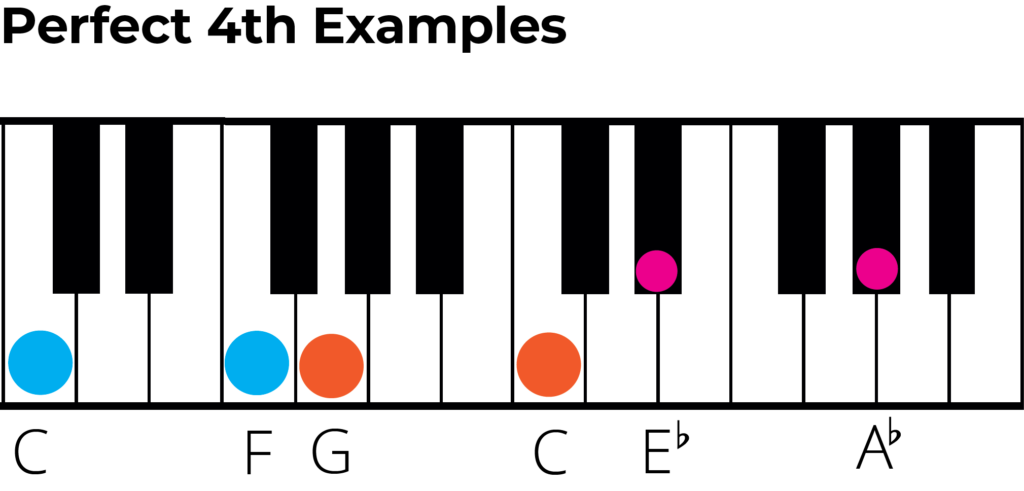
Using scales Find a Perfect 4th
Simply put, scales are patterns of half-steps and whole-steps. In the major scale, the 4th degree will be five half-tones above the root note. This interval is therefore call a perfect 4th. In the minor scale, the 4th degree is also a Perfect 4th.

Why is it called ‘Perfect’?
Perfect intervals get their name from having certain harmonic qualities: they are considered highly stable and consonant. These intervals have been traditionally called “perfect” due to their role in creating harmonious and pleasing sounds within Western music theory.
The perfect intervals include the unison, perfect 4th, perfect 5th, and octave (or perfect 8th). These intervals are characterized by their distinct harmonic qualities and the natural mathematical ratios between their frequencies.
It is also worth noting that these notes are the same in both major and minor scales. So you can use either to find them!
Ear Training and Intervals
To develop as a musician you’ll want to be able to recognise intervals by ear. This is where ear training comes in, as the more you practice, the better your’ll get.
My recommendation for this is Tonegym as they have a comprehensive and fun program for training your ears. It’s what has gotten the best results with for my own students.
In the ‘tools’ section of their site, Tonegym even have an interval memorizer that allows you to learn every type of interval.
For an in-depth look at ear training, here’s my full review of Tonegym.
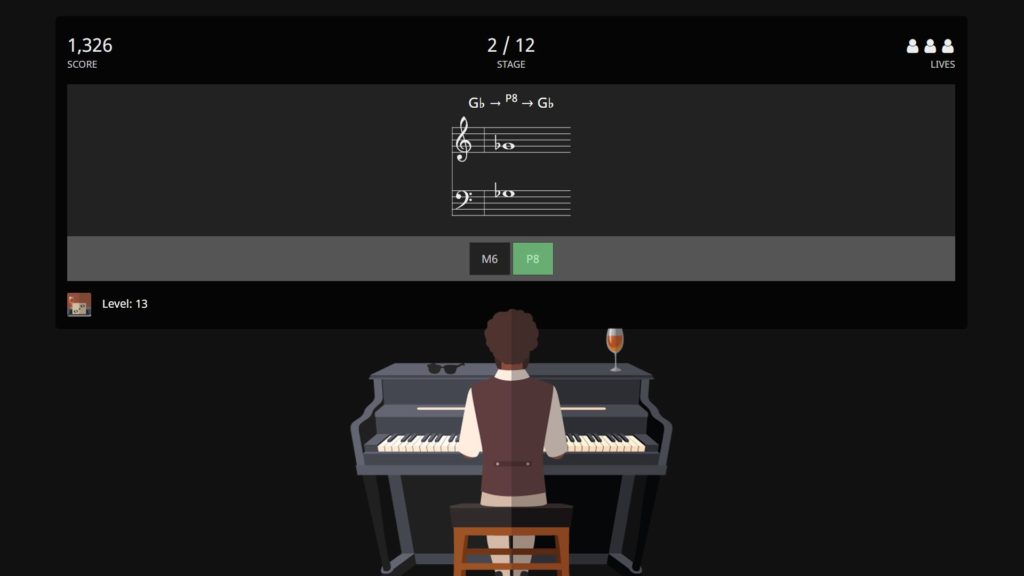
Examples of Perfect 4th Intervals
Here is a table which shows Perfect 4ths across a whole octave. Remember that to name an interval ask yourself, ‘Which degree of the lower note’s scale is the higher note?’ If the lower note is E natural, they use the E major (or E minor) scale to count up to the 4th note of the scale, which is A natural. Therefore E – A is a perfect 4th.
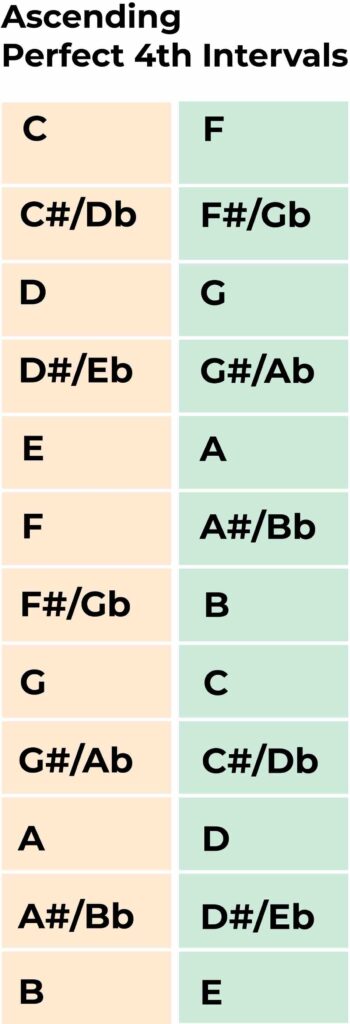
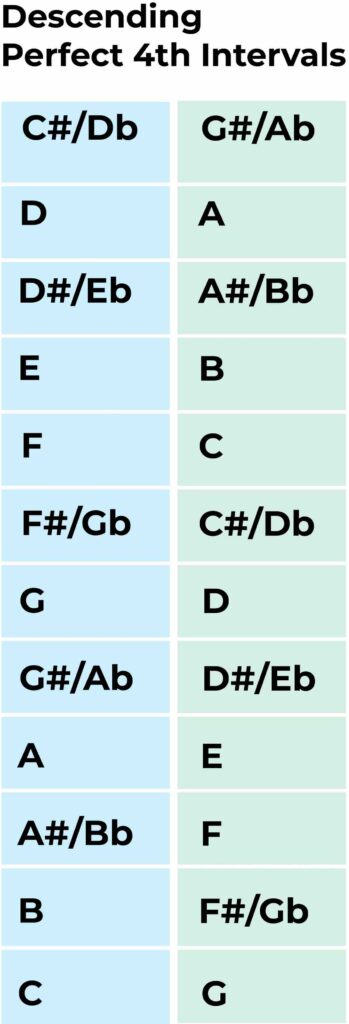
How to Identify Perfect 4th Intervals by Ear
The best way to start identifying Perfect 4th intervals is by listening to reference songs like the ones above. This will give you a reference point to look back at when listening to new pieces.
The solfege system can also help as ‘do-fa’ is a Perfect 4th interval (C to F).

ToneGym- The Ultimate Ear Training App
ToneGym allows you to improve your ear with a range of games, interactive and competitions.
Or check out our complete review of ToneGym.

How to Play Perfect 4th Intervals on Your Instrument
If you are a pianist then playing a Perfect 4th couldn’t be easier. Moving up five keys (or five half-steps) will you will get a Perfect 4th. Check out the examples below.

Perfect 4th intervals on guitar are also simply to play. Use the shapes below, which can be slide up and down the neck, to play perfect 4ths starting on any note.
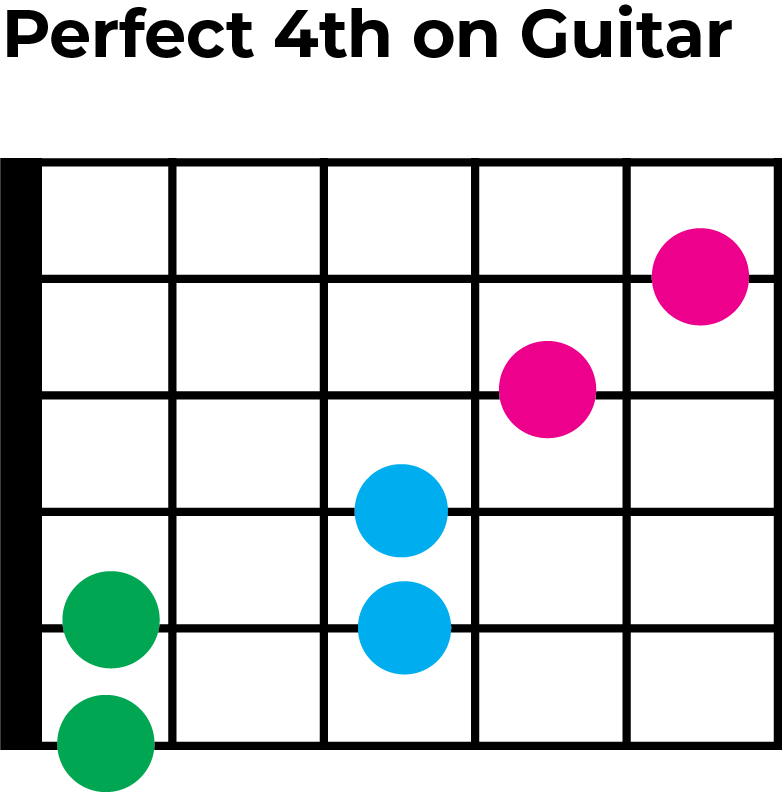
What’s next….?
- Learn about the Perfect 5th intervals.
- Expand your interval knowledge with out complete guide to intervals.
